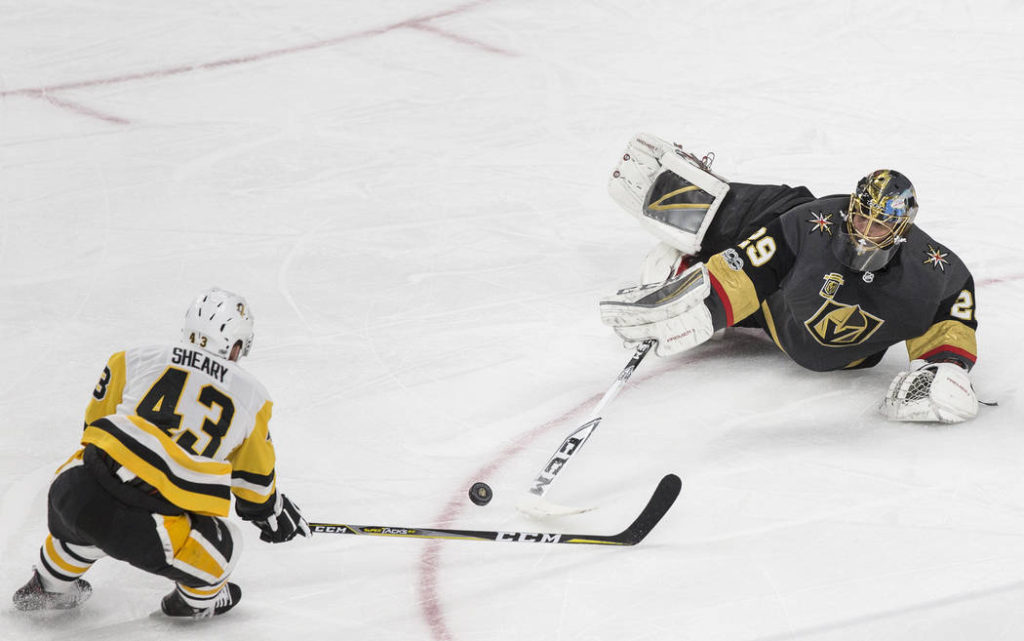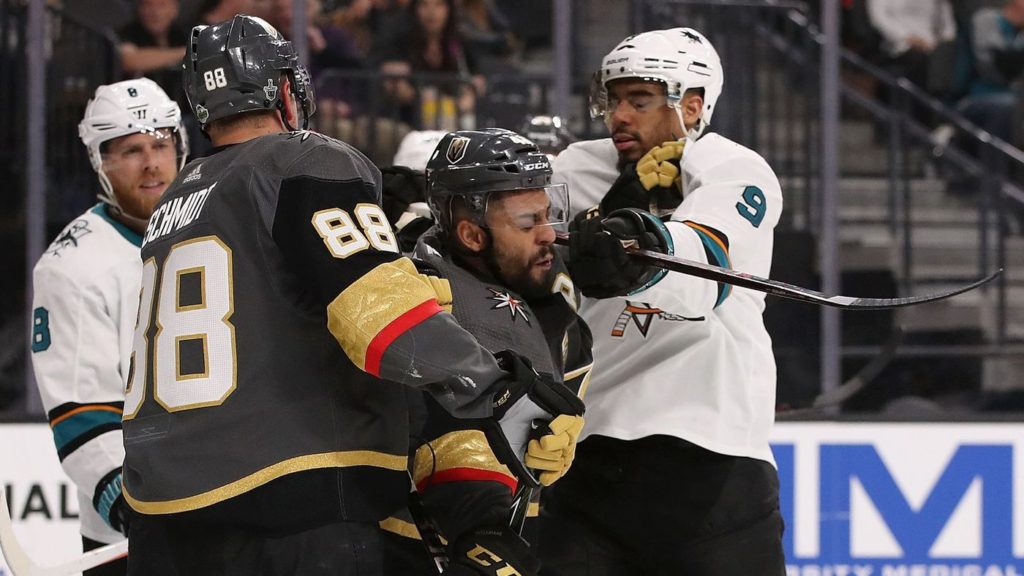Checking – It’s a term you will hear often, but it’s more than players just running into each other. Checking can be subdivided into body vs non-body checking. Let’s start with a quick run-through of non-body “checking” terms you may hear used in typical hockey coverage:
Non-Body Checks
Fore-checking– the skating done toward, or while in, the opponent’s defensive end. This doesn’t always include having possession of the puck. Players can shoot the puck into the opponent’s end, and the subsequent rush to retrieve the puck is the “fore-check.”
Back-checking– the skating back to the defensive end in order to break up the opponent’s offensive play. You may hear of players who are forwards “back checking” to help out their defensemen.
Poke check– using the stick to knock the puck off the opponents stick. Usually done by defensemen on incoming opposing forwards (or Fleury mid-ice).

Now for the good stuff, body checking! Many of us love to see the players hit each other as it adds excitement to the game, however, you may wonder why sometimes the hits result in penalties. That’s because body checks can be sub-divided into legal vs illegal. Players will be referred to as “he” for now, because at this time no body checking is allowed in girls/women’s hockey (though it still happens), most adult recreation leagues, and under 14 years of age for boys.

Legal Body Checks
Check or Hit– a player uses his torso (hips-shoulders) to “knock“ an opposing player (who is in possession of the puck) in his torso to try and force him to lose the puck. The key here, is that the player targeted for the hit must be in possession of the puck, otherwise the hit is considered illegal. Also, checking a player who has the puck without intention of trying to take the puck is illegal. One can’t just check another player for the sake of the hit, he must have intention to “play” or steal the puck.
Hip check– when a player assumes a crouching position on the incoming puck carrier, using the hips to knock the opponent off the puck.

Shoulder check– when a player uses his shoulder to run into the opponent’s shoulder or torso in order to knock the player off the puck. Also, elbows must be kept down or it’s a penalty.

**Any of these checks can happen near the boards or as “open-ice” hits, which just means not into the boards. For example – center ice.
Illegal Checks– These types of checks are high risk for causing injury to the players and usually result in penalties. Penalties can be up to 10 minutes in length or can be an ejection, depending on how serious.
Cross-checking– Holding the stick with both hands and using the stick to push/punch the opposing player. This is especially dangerous when done into the opponent’s back. This type of checking occurs frequently in front of the net.

Clipping– Getting so low in position as to hit the opponent at or below the knees and take his feet out.
Charging– Taking more than 3 strides toward the hit.
Boarding– Running another player into the boards with no intention to play the puck.
Any checking from behind or above the shoulders is illegal, and especially near the boards. Also leaving one’s feet to deliver a check is illegal.

Now that you’re well versed on checking in all it’s forms, you’ll be able to better identify exactly what’s going on out on the ice, and appreciate the game all the more!
See you at the Fortress – Go Knights Go!
**This article was written by VGK Lady April Sunga, who has been playing hockey for 24 years.